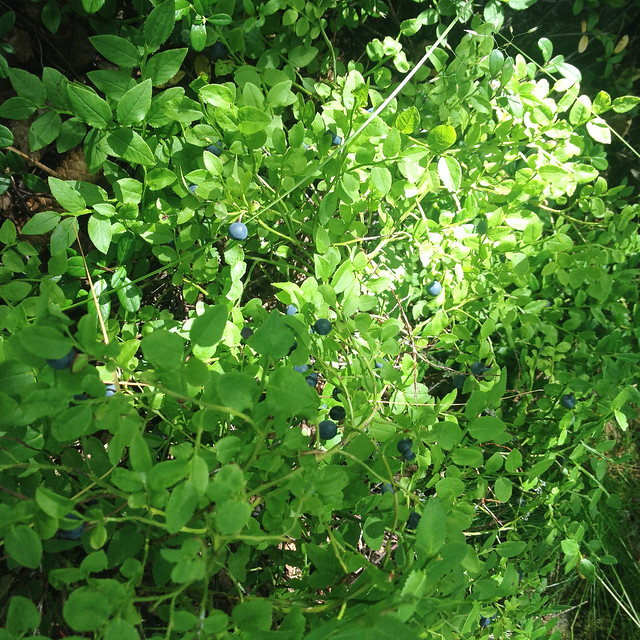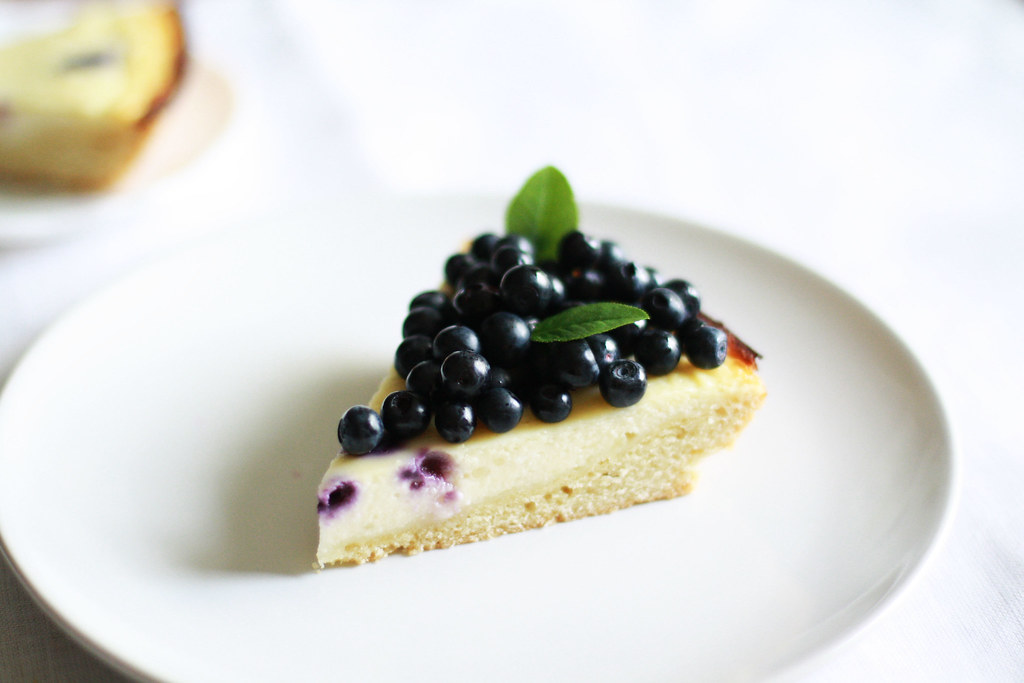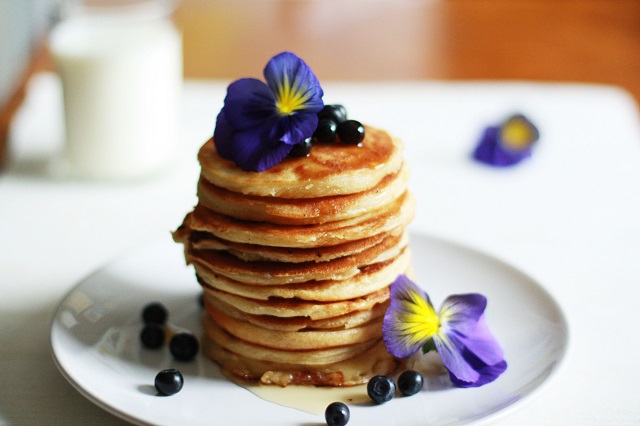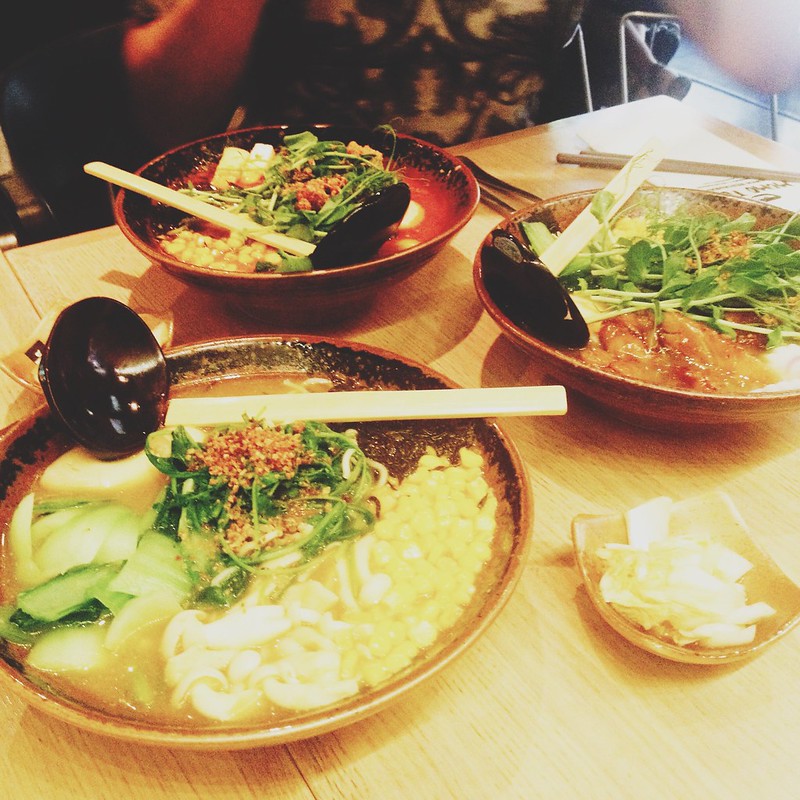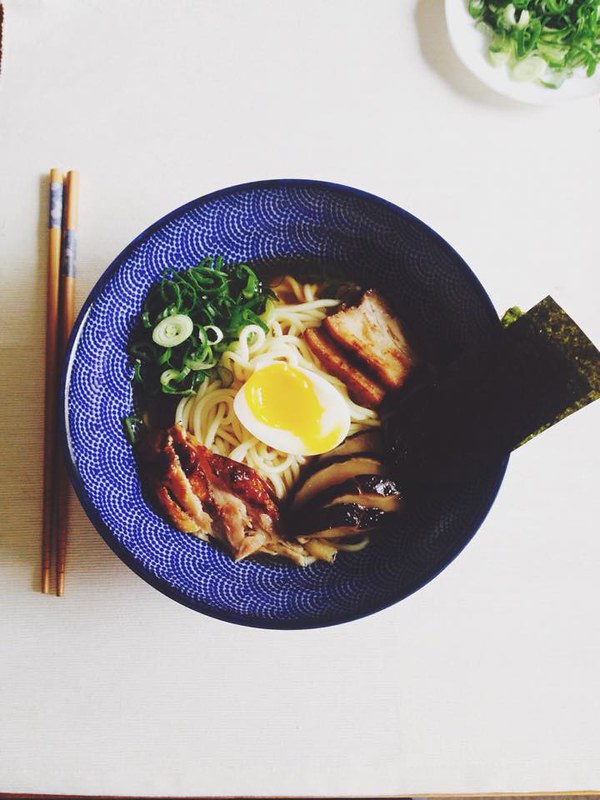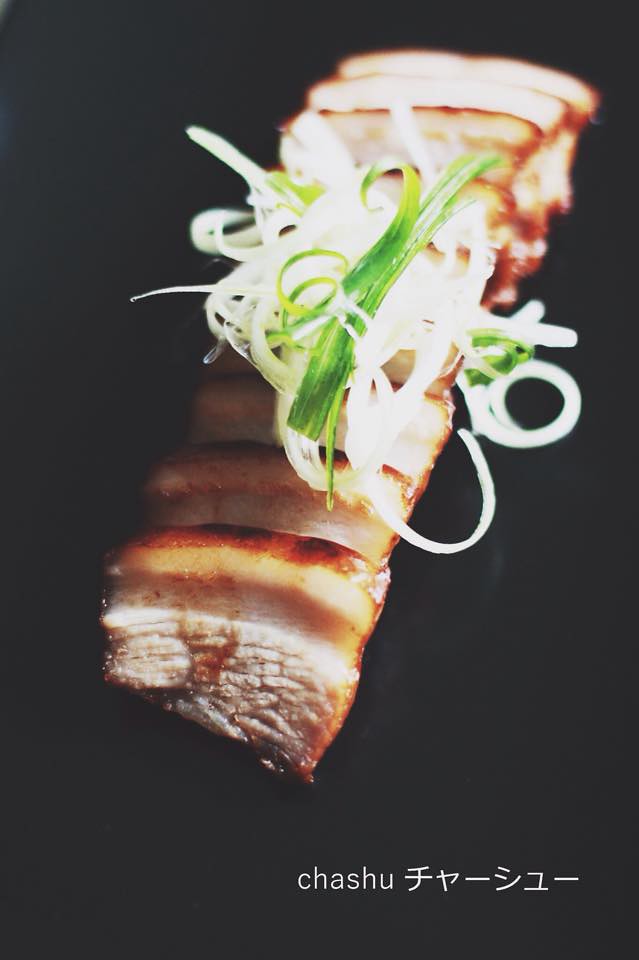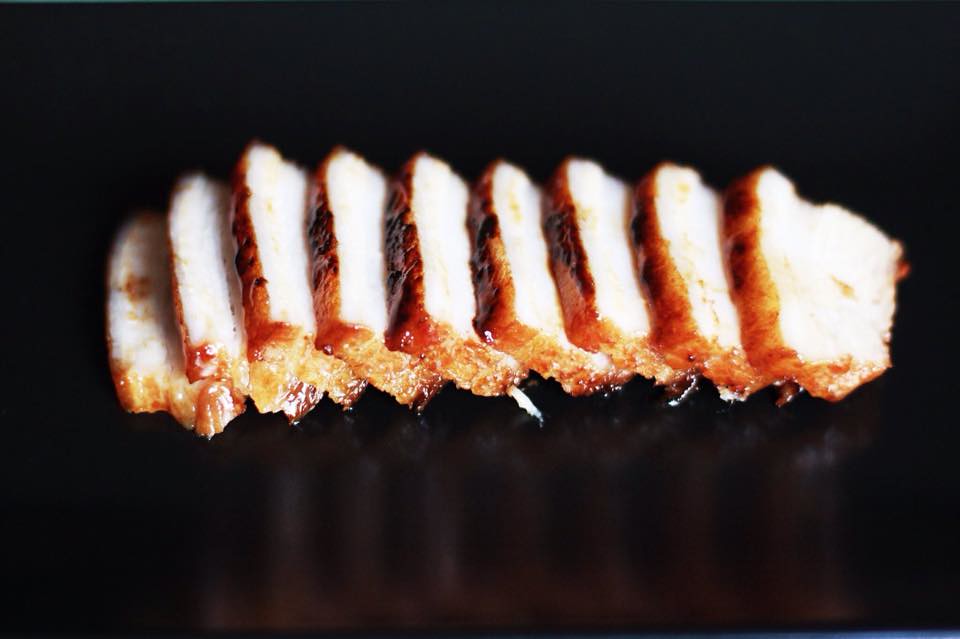This is one of my most favorite foods from Momofuku restaurant
besides ramen. Since I found out this
pork buns recipe, my friends and I have felt in love with it. It requires a lot
of time to make such as marinating the meat and letting it rest for a long time
so that it can have a shining, distinctive flavor which is one of the most
important ingredients here. So I usually marinate the night before.

The bun is the combination between a modern sandwich and traditional bun. The meat inside doesn’t need to be minced and mixed with vegetable but still have lot of flavors like the traditional ways. Meat, hoisin and fresh pickled cucumber are perfect combo. David Chang is so genius to create this.
Recipe inspired from momofuku inspired pork buns
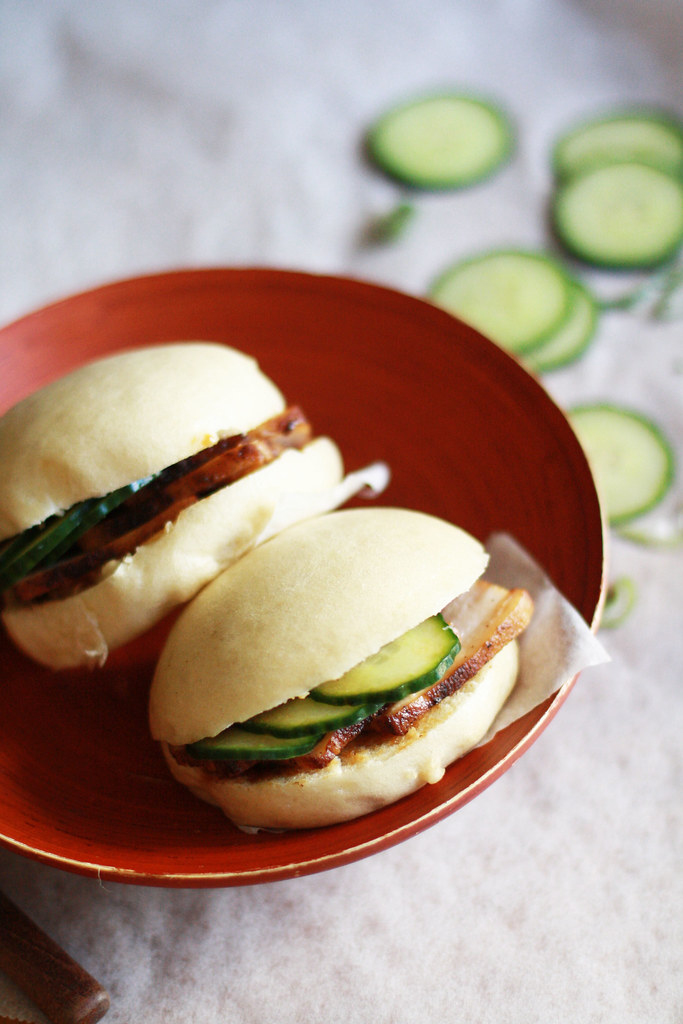

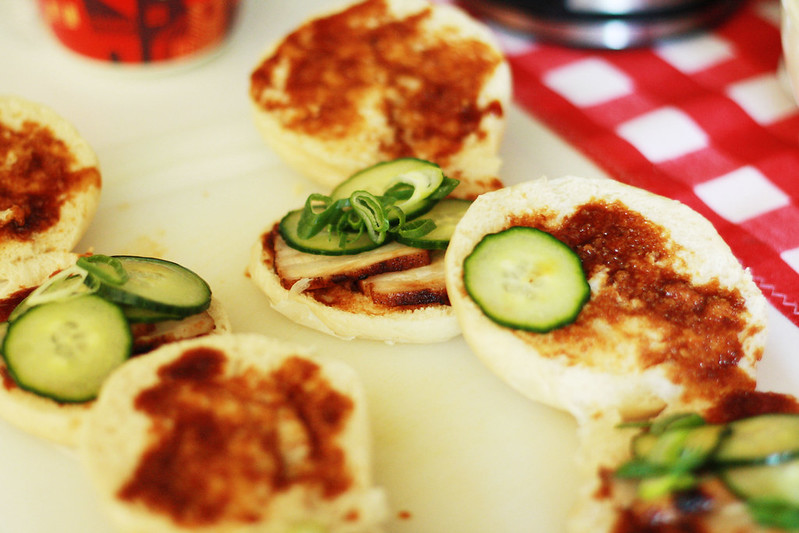
For the
meat, I
like to marinate in Vietnamese way
1,2 kg pork
2 tbsps sugar
2 tsps salt
2 shallots, minced
1 tsp black pepper, very grounded
2 tsps knorr
1 tsp fish sauce
1. Mix all
ingredients well, rub all over the pork, give it a good massage, cover with
plastic wrap, put it in the refrigerator at least 5-6 hours
2. Let the
meat in room temperature 20 minutes before cooking.
3. Fry the
meat in pan to golden with oil.
4. Put it
in a baking tray, bake at 200C in 1 hour or so. Checking the time and
temperature, you can reduce and increase the temperature depending on the oven
so it can be cooked perfectly inside.
5. Let it
rest a few minutes before cutting into slices.
For the
pickled cucumber
1. Slice cucumber
thinly
2.
Mix cold water, sugar and vinegar, put the slice
cucumber in about 10-20 minutes
For the buns
·
1 tablespoon
plus 1 teaspoon active dry yeast
·
4 1/4cups
bread flour
·
6 tablespoons
sugar
·
3 tablespoons
nonfat dry milk powder
·
1 tablespoon
kosher salt
·
½ teaspoon
baking powder, rounded
·
½ teaspoon
baking soda
·
1/3 cup
rendered pork fat, bacon fat or vegetable shortening, at room temperature
·
Vegetable
oil
·
1 cup
hoisin sauce
·
½ cup
thinly sliced scallions (green and white parts)
·
Sriracha,
for serving
1. Stir together the yeast and 1 1/2 cups room
temperature water in the bowl of a stand mixer fitted with a dough hook. Add
the flour, sugar, milk powder, salt, baking powder, baking soda and fat and mix
on the lowest speed setting for 8 to 10 minutes. The dough should gather
together into a ball on the hook. Lightly oil a large bowl and put the dough in
it, turning it over to coat it with the oil. Cover the bowl with a dry kitchen
towel and put it in a warm place and let the dough rise until it doubles in
size, about 1 hour 15 minutes.
2. Punch the dough down and turn it out onto a clean work
surface. Using a sharp knife, divide the dough in half, then divide each half into
5 equal pieces. Gently roll the pieces into logs, then cut each log into 5
pieces, making 50 pieces total. They should be about the size of a Ping-Pong
ball and weigh about 25 grams each. Roll each piece into a ball and set them on
baking sheets. Cover them loosely with plastic wrap and let them rise for 30
minutes. While they're rising, cut out fifty 4-inch squares of parchment paper.
3. After 30 minutes, use a rolling pin to roll each ball
into a 4-inch-long oval. Brush lightly with vegetable oil, lay a chopstick
horizontally across the center of the oval and fold the oval over onto itself
to form a bun. Gently pull out the chopstick, leaving the bun folded, and
transfer it to a square of parchment paper. Put it back under the plastic wrap
and form the rest of the buns. Let the buns rest for 30 to 45 minutes: they
will rise a little.
4. Set up a steamer on top of the stove. Working in
batches so you don’t crowd the steamer, steam the buns on the parchment squares
for 10 minutes. Remove the parchment. You can use the buns immediately or allow
them to cool completely, then put them in plastic freezer bags and freeze for
up to 2 months. Reheat frozen buns in a stove top steamer for 2 to 3 minutes,
until puffy, soft, and warmed all the way through. Freeze half the buns in
airtight bags for another time.
5. Open a warm bun and spread about 2 teaspoons of hoisin
sauce on the inside. Add 2 pieces of pork belly, then a couple slices of
pickle. Add a scattering of scallion and a squirt of sriracha if you like.
Repeat with the remaining buns, and eat!


